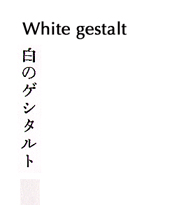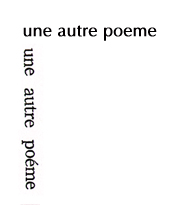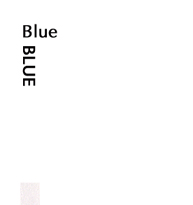|
|
KITASONO KATUE AND
Introduction, Facsimiles, and Translations
The first set of links lead to reproductions of the pages of the five
basic poems as they appeared in Kitasono's books, Kemuri no chokusen
(1959)) and Blue (1979). Kitasono was working on the title poem
of the latter at the time of his death, and we include it in part to show
a link between it and the poems in Kemuri no chokusen. We
present these facsimiles largely to give readers from other parts of the
world a better sense of Kitasono's approach to the presentation of
poems on the page, as well as making them available to those who can read
the Japanese. At a later date, we will arrange for Japanese versions
that may be clearer and easier to read in electronic reproduction, though
we hope that these facsimile pages will still serve the functions of
presenting the originals as they first appeared.
Although our primary concern has been with reproduction of the text,
the electronic environment presents problems with accuracy of reproduction.
Of the many compromises necessary in the electronic environment, one has
been to enlarge the pages somewhat to make the graphs more legible. In the
first two poems, "Monotonous space" and "Black church," we have run the pages
together in continuous screens. The reader of these should start from the right
and read to the left. The third poem, "White gestalt," appears in two versions:
one reduced so that the reader can get a sense of how the complete pages
look together, and one larger and more legible reproduction. Again, reading
order moves from right to left. The last two poems, "Une autre poéme"
and "Blue," appear in their original page format, read from right to left, but we
have stacked the pages vertically so they would be easier to print out and so the
reader does not have to first scroll to the right, then scroll to the left while reading.
These last two poems give the reader a sense of Kitasono's use of passages in other
languages, if only in the poem's titles. He sometimes used English and French words
and lines interspersed with Japanese Kanji and Katakana to give the poems an
international quality, to suggest the inadequacy of a single writing system, and to
give his pages a denser and more complex texture. It would have been annoying to
most readers if we had made some sort of indication of these uses in the text of the
English translations, but the facsimile of "Une autre poéme" should give at
least a hint of the polyglot
texture of Kitasono's pages. We also hope that the reader
gets an impression of Kitasono's sense of the verse "line" as it evolved away from
traditional eastern and western forms of lineation, how the sparseness of graph rows
and their relation to negative space contribute to the poems' rhythms, and how much
Kitasono reoriented the relation of vertical to horizontal reading.
"Monotonous space" was Kitasono's most widely circulated poem published
outside Japan during his lifetime. A cornerstone of Concrete Poetry, simply
enlarging its graphs produced sufficient images to act as a catalyst as
well as an example for a literary movement in the Atlantic Cultures.
The poem's popularity outside Japan gave rise to the puns and the miniature poem in
our edition's title. Oceans Beyond Monotonous Space.
We will not attempt to include an endless series of languages
in this translation project, nor would we like to see these
become the only 20th Century avant garde Japanese poems available
in other languages. These pages are presented here informally, as the
beginning of what we hope will become a greater appreciation of
Kitasono through the World Wide Web which he foreshadowed in his lexical and
visual poems.
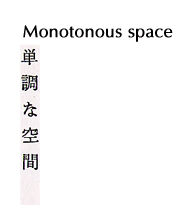
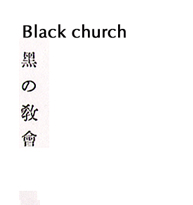
Español — Carlos Martinez Luis
Magyar — Koppány Márton
Italiano — Anny Ballardini
Türkçe — Aysegül Tözeren
Thai — Ploi Umavijani
Nederlands — Stijn Schiffeleers
Português — L.C. Vinholes
Svenska — Per Kjellqvist
Deutsch — Martina Groß
Français — in progress
|
|
|
|
